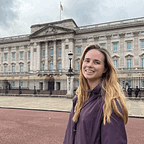Each week, I will write about one of London’s boroughs. I previously explained how London is divided up and what boroughs are so be sure to check that out first. There are 32 boroughs that make up London, plus the non-borough division the City of London. (Previous borough articles: 1).
Borough 2: The City of Westminster
The first actual borough of London’s 32 boroughs is the world-renowned City of Westminster. Yes, this is the borough home to famous landmarks like Big Ben, The West End, Westminster Abbey, Buckingham Palace, and more. It is, of course, the site of much of the British government.
Like the non-borough City of London, this borough also has the added distinction of being a city in its own right. It is the only London borough to have this distinction.
*Full disclosure: this is the borough I live in, but I’ll try to refrain from too much personal opinion.
First and foremost: the history!
Geographically, Westminster was originally an island on the Thames Marshes. Though there is evidence of Roman settlement in the area, it was not as notable as that of the City of London a few miles to the east.
After the Romans left London in the 5th century, trade began to develop to the west of the City of London under the Anglo Saxons. These westerly settlements included Aldwych, the location of which falls partly within the boundaries of the City of Westminster today. There was also an established settlement of monks in Westminster by the end of the 8th century.
It was during the 11th century, though, is when Westminster’s importance grew. King Edward the Confessor began construction of an abbey at Westminster and a palace between the abbey and the river. This palace guaranteed the seat of government would be fixed in Westminster and drew wealth and power away from the City of London.
For several centuries, Westminster and London were two distinct cities separated by fields and small villages. It was only in the 1500s that both cities began to sprawl outward. Small villages like Marylebone and Kensington were absorbed into a Greater London (Marylebone is part of the City of Westminster today).
Also in the 16th century, Westminster Palace ceased being a royal residence and instead, gradually, became the meeting place for the Lords and the Commons. By the mid-1500s, it became the Houses of Parliament.
King Henry VIII made radical changes to Westminster (beyond the renaming and repurposing of the Abbey). He overtook Whitehall Palace, built St. James Palace, and drained the marsh outside to create St. James Park for hunting (afterward, Charles II turned it into a park for pedestrians).
In 1703, Buckingham Palace was built for the Duke of Buckingham. After alterations, it became home to Queen Victoria in 1837 and has been the London residence for monarchs since.
10 Downing Street was given to Robert Walpole, the first prime minister of the UK, in 1711. It has been the official residence for the British Prime Minister since.
The 19th century saw the creation of many museums, including the The National Gallery, Trafalgar Square, and Westminster Bridge. Conversely, the century also saw the destruction of Westminster Palace by fire in 1834. In its rebuilding, Big Ben was installed in 1858, and the Houses of Parliament were completed in 1868.
The City of Westminster Today
Today, the City of Westminster is the epicentre of London tourism and British government. Approximately 95% of all visitors to London visit Westminster, which means about 28.5 million tourists annually! It’s not hard to see why. The West End and Soho, thriving arts and theater districts, are within the borough. Also within the borough is Oxford Street, a very busy shopping street, and its neighboring shopping districts.
As mentioned at the top of this article, there are also numerous landmarks located throughout the borough. Several Royal Parks are also within the boundaries including: Hyde Park, Regent’s Park, Green Park, Kensington Gardens, and St. James’s Park. These serve locals, workers, and are tourist draws in their own right.
Mayfair and St James are also within Westminster and are home to a great concentration of private equity firms and hedge funds. Combined with the tourism and government activities, it’s not hard to see why Westminster has a significantly higher GDP than any other London borough.
Major transportation hubs are also found within Westminster: Charing Cross, Marylebone, Paddington and Victoria. There are also 27 London Underground stations across the borough with 10 of London’s 11 Tube lines operating in the borough.
Bonus Trivia
As an inner borough, the City of Westminster is geographically small, but highly populated. It is the 9th most densely populated borough in London (with a ton of green space, though!). With a rich history of immigration, the population is more diverse than most of the UK, with nearly 27% of residents identifying at Black or Middle Eastern.
If you like English history, you’ll likely be aware of the English Heritage blue plaques and Westminster is full of them. The oldest surviving plaque, which was installed in 1875, is on King Street and is in honor of Napolean III.
Following on with history, there are over 11,000 listed buildings within the City of Westminster. Over 78% of the borough is included within a designated conservation area!
Westminster School is one of the most prestigious and exclusive public (for Americans, that means ‘private’ — yeah, it’s confusing) schools in London and has been operating since the early 14th century. King Henry VIII personally ensured that the school would survive by statute following his dissolution of the monasteries in 1540.
Conclusion
If you are visiting London, it is very hard to avoid Westminster. Between the history, the museums, the arts, and other modern attractions, it’s a destination for tens of millions around the globe.
Personally, it’s my favorite London borough (not just because I’m lucky enough to call it home). There is so much to do, an immense amount of history, and the parks are world-class amazing. I could (and have, and will continue to) write about wonderful things in the borough.
But for now I’ll leave you with a quick tourism tip: if the weather happens to be nice, don’t try to walk across Westminster Bridge at sunset. Apparently, that is a recipe for everyone with a social media account in the vicinity to storm the bridge for the perfect Big Ben sunset selfie. My unfortunate timing will not be soon forgotten by myself or my poor dog who had to be put on my shoulder as we barged through the crowd. Oops.
Stay tuned for more of London’s boroughs and follow me for writings about London, life, and whatever thoughts and ideas I decide to share. And please say hi! I love to say hi, too.






